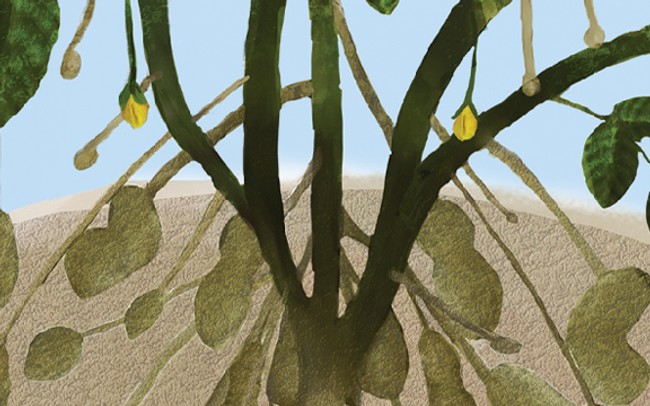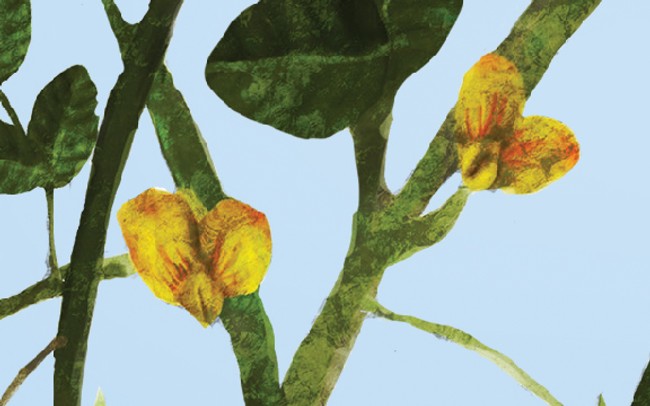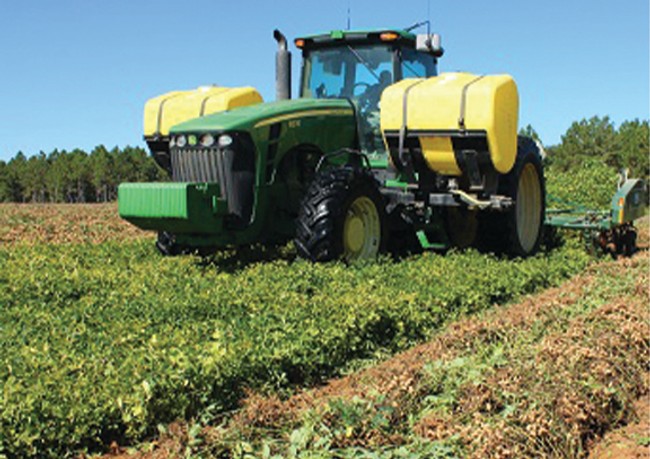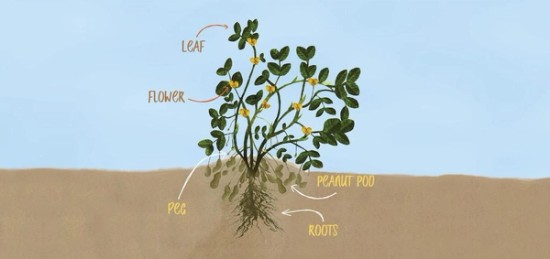Unlike most plants, the peanut plant flowers above the ground, but fruits below ground.
- From planting to harvesting, the growing cycle of a peanut takes 4 to 5 months, depending on the type and variety.
- Sustainability of resources, communities and family are top priorities for USA peanut farmers.
Many people are surprised to learn that peanuts grow beneath the soil and do not grow on trees like pecans or walnuts. Below you’ll discover how peanuts grow, from preparing the soil for planting to the peanut harvesting process.
First, Farmers Plant the Seeds.
Across the USA Peanut Belt, peanuts are planted after the last frost in April through May, when soil temperatures reach 65°—70°F. Farmers plant specially grown peanut kernels from the previous year’s crop about two inches deep, approximately one to two inches apart in rows. Pre-planting tillage ensures a rich, well-prepared seedbed. For a good crop, 140 to 150 frost-free days are required.

Seedlings Crack the Soil
Peanut seedlings rise out of the soil about 10 days after planting. They grow into a green, oval-leafed plant about 18 inches tall. Unlike most plants, the peanut plant flowers above the ground, but fruits below ground.

Flowers Appear
Yellow flowers emerge around the lower portion of the plant about 40 days after planting. When the flowers pollinate themselves, the petals fall off as the peanut ovary begins to form.

“Pegging” is a Unique Feature.
This budding ovary is called a “peg.” The peg enlarges and grows down and away from the plant forming a small stem which extends to the soil. The peanut embryo is in the tip of the peg, which penetrates the soil. The embryo turns horizontal to the soil surface and begins to mature taking the form of a peanut. The plant continues to grow and flower, eventually producing some 40 or more pods. From planting to harvesting, the growing cycle of a peanut takes four to five months, depending on the type and variety.
Farmers Harvest 140 to 150 Days After Planting.
When the plant has matured and the peanuts are ready for harvest, the farmer waits until the soil is not too wet or too dry before digging. When conditions are right, he or she drives a digger up and down the green rows of peanut plants. The digger pulls up the plant, gently shakes off any lingering soil, rotates the plant and lays it back down in a “windrow”—with peanuts up and leaves down.

Combining is the Last Step.
Peanuts contain 25 to 50% moisture when first dug and are dried to 10% or less so they can be stored. They are usually left in windrows for two or three days to cure, or dry, before the next step. (Read more about the history of peanut harvesting.)
After drying in the field, a combine separates the peanuts from the vines, placing the peanuts into a hopper on the top of the machine and depositing the vines back in the field. Peanut vines can be left in the field to nourish the soil or be used as nutritious livestock feed. Freshly combined peanuts are then placed into peanut wagons for further curing with forced warm air circulating through the wagon.
Peanuts Require Less Water than Other Nuts.
Peanut plants need 1.5 to 2 inches of water per week during kernel development; however, it takes just 3.2 gallons of water to produce an ounce of peanuts, compared to 28.7 gallons for an ounce of almonds. If rain does not meet those needs, farmers will irrigate the fields. The peanut is a nitrogen-fixing plant; its roots form modules which absorb nitrogen from the air and provide enrichment and nutrition to the plant and soil (learn more about peanuts and sustainability here).
For resources for teachers, educators and caregivers, Discover the Powerful Peanut activity cards.
To learn how to grow your own peanut plant, click here.
